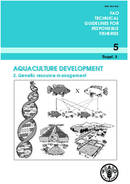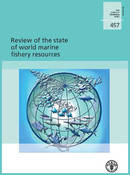Publicaciones
These technical guidelines have been developed to support sections of FAO’s Code of Conduct for Responsible Fisheries on aspects of genetic resource management in aquaculture. Guidance is provided on broodstock management and domestication, genetic improvement programmes, dissemination programmes for genetically improved fish, economic considerations in genetic improvement programmes, risk assessment and monitoring, culture-based fisheries, conservation of fish genetic resources, gene banks, a precautionary approach and public relations. The effective management of genetic resources, risk assessment...
Due to the rapidly changing production processes in aquaculture worldwide (e.g. submergible cages, sea ranching, intensification, aquaponics and recirculation systems), which sometimes increase vulnerability to disease outbreaks and which generally require large investments from aquaculturists, over the last decades the demand for insurance to share and cover the risks involved has increased significantly within the aquaculture sector.
Risk management is increasingly gaining attention within the aquaculture sector, which is reflected in the development and increasing implementation...
The introductory chapters refer to the global situation and major trends of world marine capture fish production and the state of the world marine fishery resources. More detailed information is provided for each FAO statistical area, together with a discussion of the major trends and changes that have occurred with the main fishery resources exploited in each area and comments on the stock assessment work undertaken in support of fisheries management in each region. Special...
Aquaculture is one of the fastest growing food production systems in the world, with the bulk of its output currently being produced within developing countries, and with expectations for aquaculture to continue its contributions to food security and poverty alleviation. The vast majority of aquaculture practices around the world have been pursued with significant nutritional and social benefits, and generally with little or no environmental costs. However, it is essential for current efforts aiming at...
In addition to explanations of culture technology and methodology, the manual includes a brief discussion of the processes of identifying a suitable site for locating a hatchery and considerations in planning and designing the hatchery. It also includes advances that are likely to improve the reliability and economic viability of the hatchery industry in the near future, featuring topics such as polyploidy, the development of selected strains, cryopreservation of gametes and the need for novel,...






